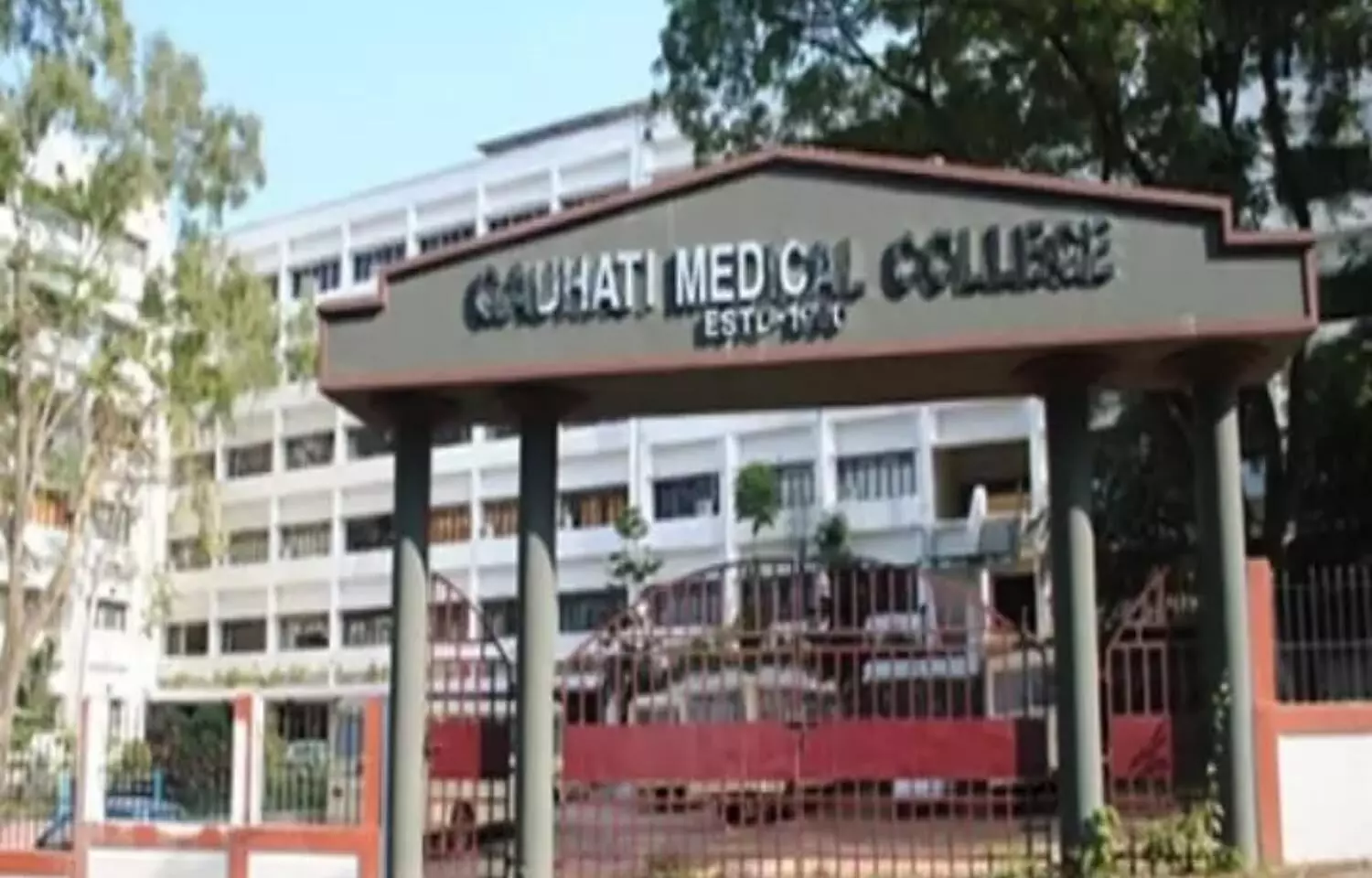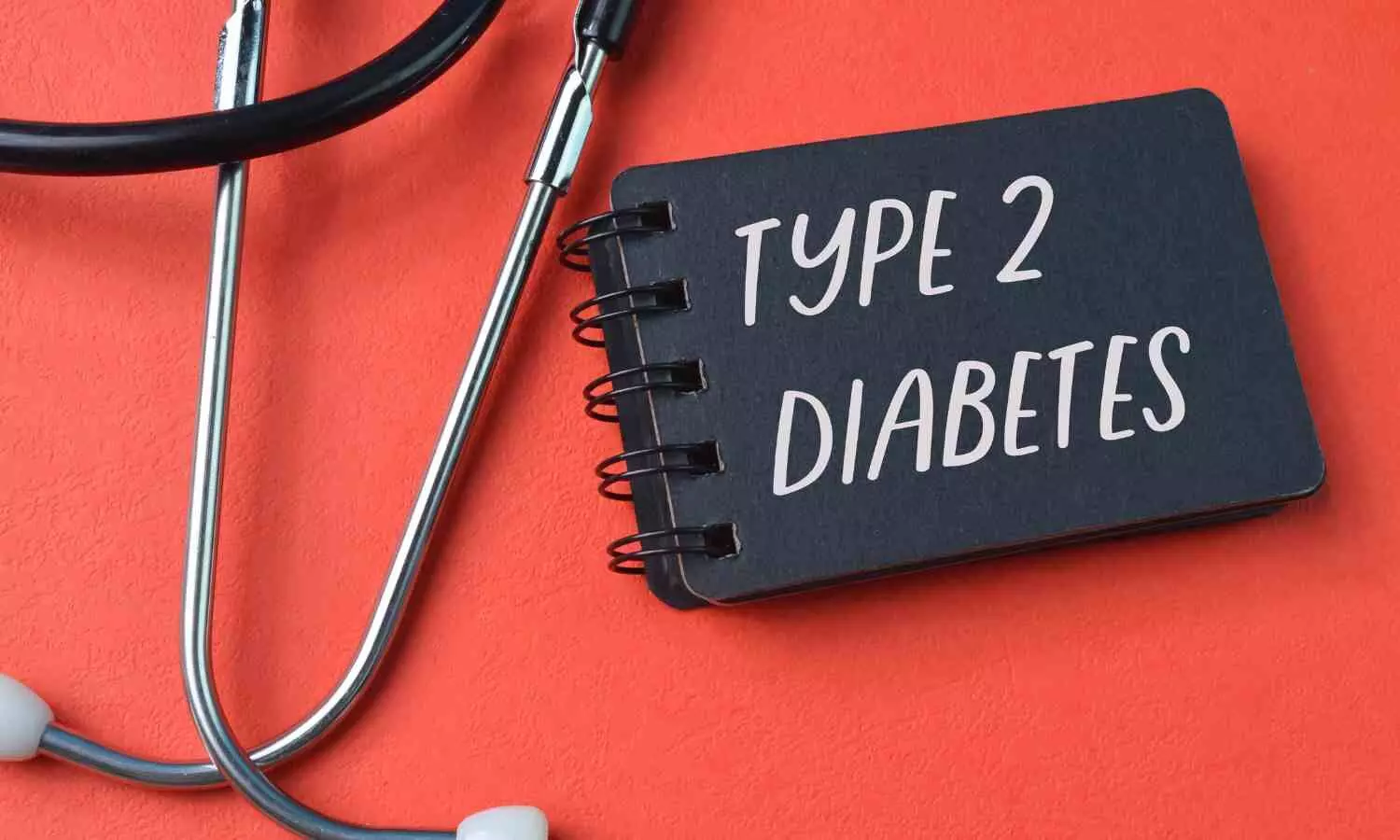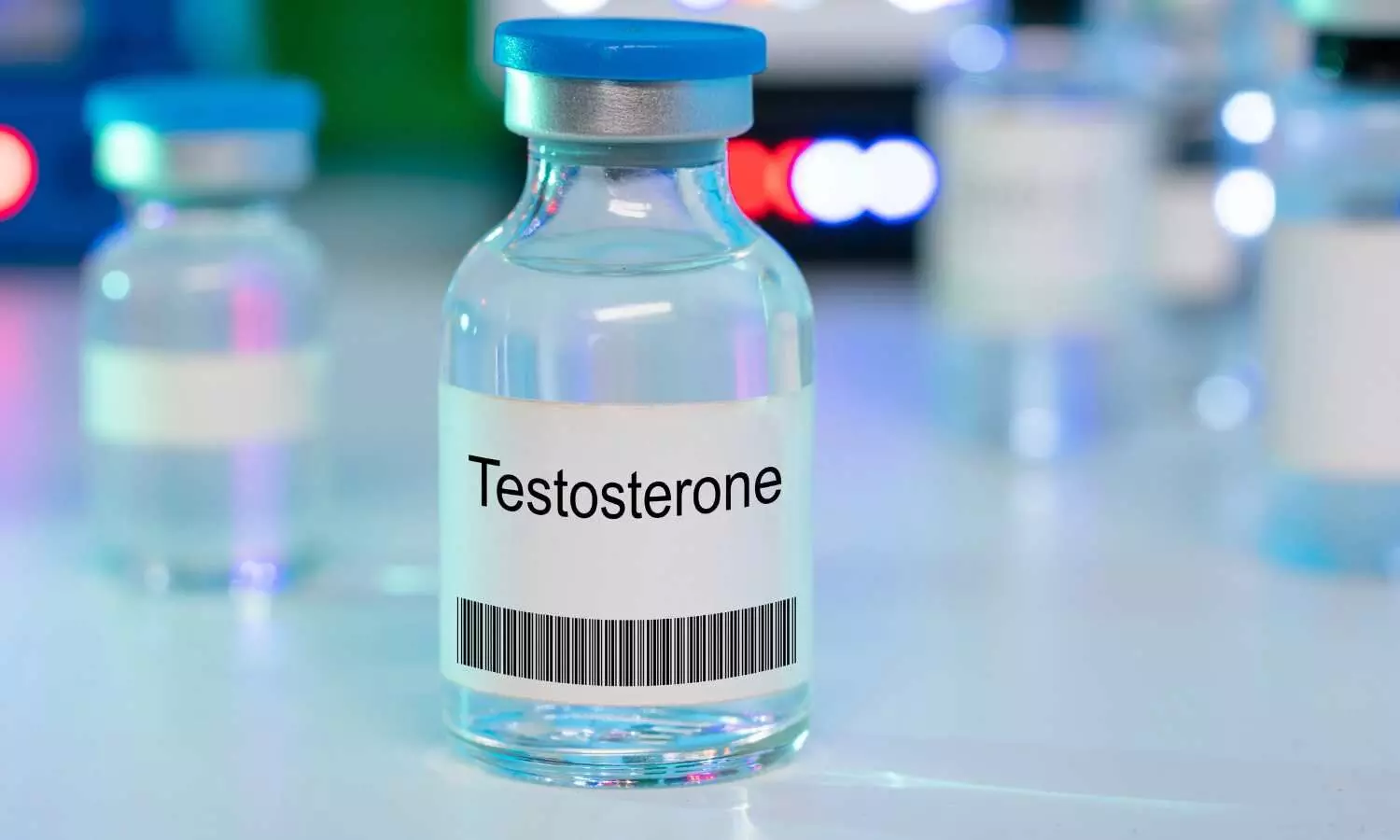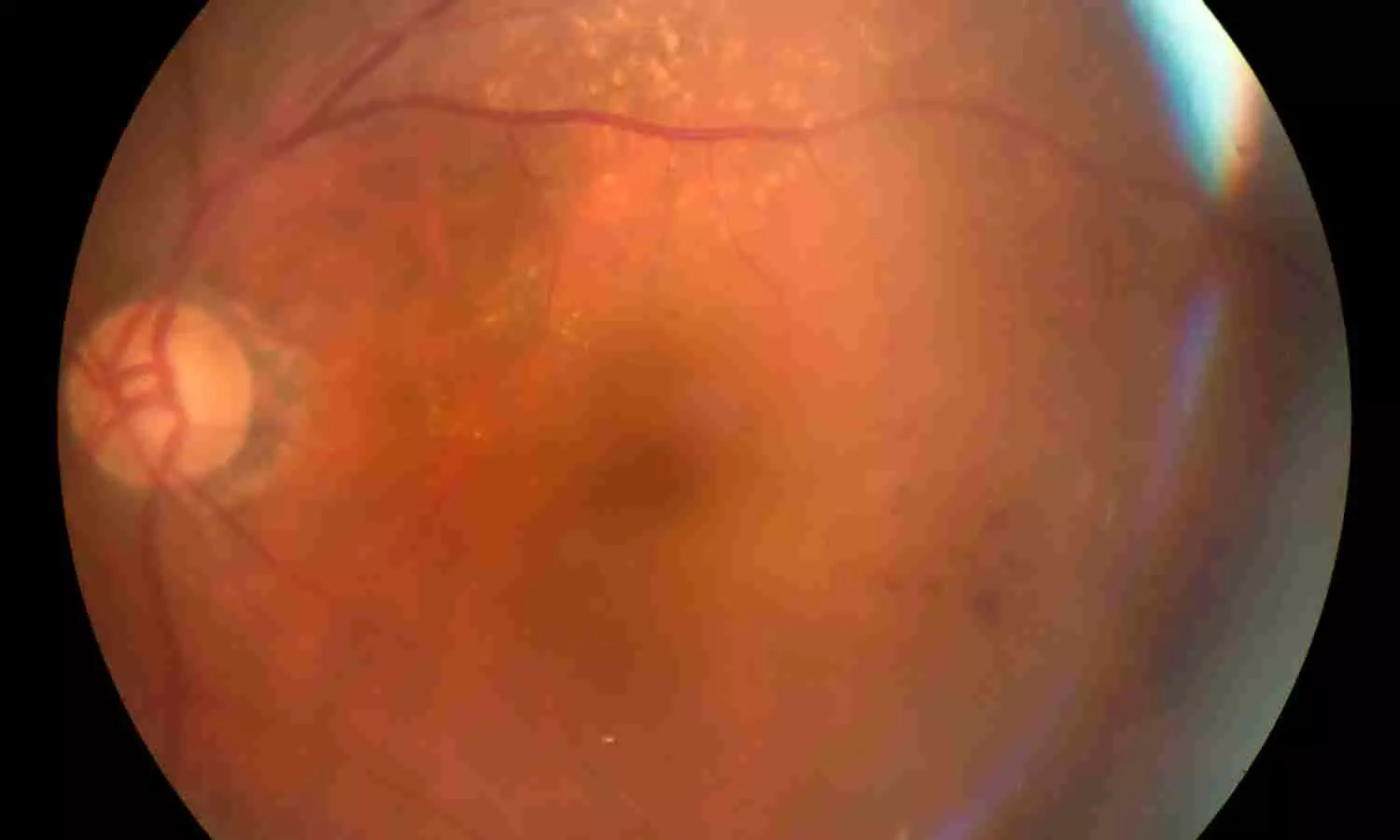Study finds estrogens play a hidden role in cancers, inhibiting a key immune cell
Powered by WPeMatico
Powered by WPeMatico
Powered by WPeMatico

Guwahati: In a recent incident that has raised concerns among the public, the Gauhati Medical College and Hospital (GMCH) has found itself at the centre of controversy following allegations regarding a newborn’s fractured arm during delivery.
On Wednesday, Dr Abhijit Sharma, Superintendent of Gauhati Medical College and Hospital (GMCH), clarified that the complications during the delivery were due to the mother’s pre-existing condition of sickle cell anaemia, which posed significant risks for both her and the child.
The incident took place on September 23, just a day after the woman was admitted to the hospital around 10 a.m. on September 22.
Also Read: Kerala: Newborn, mother die at private Medical College; probe ordered
According to Assam Tribune, Dr Sharma assured, “An X-ray was immediately conducted, and the child was referred to an orthopedic specialist at the hospital. The doctor confirmed that the fracture will heal on its own.”
He provided an update, stating that the mother and child are in stable condition. Dr Sharma also assured that the father has been informed about the situation, emphasizing the importance of transparency and open communication with the family.
The clarification from GMCH follows accusations from the child’s father, who alleged that hospital staff exhibited negligence. He claimed to have noticed fractures in three places on his newborn’s arm and expressed frustration over being denied access to his child post-delivery.
Dr Sharma, a prominent figure at GMCH, emphasized that the hospital took all necessary precautions during the treatment, especially considering the mother’s medical condition. He reiterated that the healthcare team is committed to maintaining the safety and well-being of both mother and child, stating that the hospital has consistently kept the family updated on the child’s health status.
Also Read: Odisha: Newborn dies of medical negligence, HRC directs district Collector to seal Nursing Home
Powered by WPeMatico

Mumbai: Controversy surrounding an associate professor from BYL Nair Hospital who was suspended on the accusation of sexually harassing an MBBS student continues to escalate as around 10 more such complaints have been filed by female students of the institute.
According to the multiple complaints that were submitted recently, the suspended doctor allegedly sexually harassed them on multiple occasions and threatened them with academic repercussions if they filed formal complaints.
These complaints came to light during a hearing held at Prabhadevi on Thursday. The hearing was organized by the Internal Complaints Committee (ICC), the Sexual Harassment Prevention Committee at the Workplace and the Savitribai Phule Women’s Resource Centre (SPGRC) following a directive from the Brihanmumbai Municipal Corporation’s (BMC) additional municipal commissioner.
The hearing was held to gather testimonies from the victims, providing them with a platform to come forward with their official complaints after ICC had initially requested written complaints from students by September 25.
Medical Dialogues had earlier reported that the said associate professor of BYL Nair Hospital was found guilty after a sexual harassment allegations complaint filed by an MBBS student who is also an athlete were proven true. The BMC-run Local Complaints Committee (LCC) – BMC’s Prevention of Sexual Harassment (POSH) committee which investigated the sexual harassment complaint issued a series of recommendations including the immediate transfer of the professor until the student finishes her studies.
The incident reportedly occurred when the student was summoned twice to the associate professor’s cabin under the pretext of discussing her sports activities. During these encounters, the professor allegedly touched her inappropriately, claiming it was part of a medical examination. He then asked her to take off her apron, placed a hand on her shoulder, and talked about the colour of her lips. The student also reported that he made inappropriate comments, which left her feeling uncomfortable.
Initially, she approached an doctor for help, but when no action was taken, she escalated the matter to the hospital’s Internal Complaints Committee (ICC). Dissatisfied with their response, the student took her complaint to the LCC.
Following an investigation, the LCC found ‘Truth’ in the student’s allegations and issued a series of recommendations. In a confidential report submitted on September 5, the LCC advised the hospital to immediately transfer the associate professor to prevent any further interaction with the complainant. It also directed that the accused should not be allowed to serve as an examiner in any of her assessments.
Similarly, the fresh complaints filed by the female students pointed out similar allegations. Among them, three female students have detailed their negative experiences with the professor.
As per HT news report, One student alleged that the doctor deliberately withheld checking one of her exam answers, forcing her to meet with him to get the issue resolved. “During these meetings, he assaulted me many times, she said. Another student shared a similar experience, stating that the professor would call her to his office under the guise of academic discussions and then assault her.
Moreover, three staff members also attended the hearing, one of whom revealed that she had received 37 memos within a year. She said that in her more than ten years of employment, she had never received as many memos as she did during the year she worked under the professor’s supervision. “I refused to carry out certain tasks that were beyond my authority, but he still pressured me to do them,” she reportedly said during the hearing.
Furthermore, the Association of State Medical Interns (ASMI) has warned of a nationwide protest in Maharashtra if their demands are not met in this regard. In a statement issued by the association mentioned “Multiple complaints were submitted on Thursday, and several female students came forward to speak before the higher committee. We have provided evidence against the professor and the dean. We have made legitimate demands based on this evidence, and if these demands are not met, we will initiate a statewide agitation in Maharashtra.”
In a post on ‘X’, Member of Parliament and NCP (SP) leader Supriya Sule claimed that Mumbai’s civic-run Nair Hospital have turned a blind eye to the issue and the female medicos of the hospital who have raised complaints about sexual harassment are being silenced.
“Shocking! It has come to my notice that women doctors who have raised their complaints about sexual harassment at Nair Hospital are being silenced. Despite them requesting to be heard, government authorities are turning a blind eye to this entire issue safeguarding the assaulters. I had raised this isssue before. We demand urgent action now, as each day’s delay is gravely jeopardising the safety of our women. It’s appalling that despite numerous shocking incidents in the state, the government continues to remain not only mute but shielding by inaction,” she posted.
Also read- BMC’s POSH committee finds Nair Hospital Associate Prof guilty of sexually harassing MBBS medico
Powered by WPeMatico

Mumbai: Global pharma major, Lupin Limited has announced that its subsidiary Lupin Atlantis Holdings SA has entered into a distribution agreement with Celnova Pharma for Lupin’s orphan drug NaMuscla (mexiletine). Celnova will commercialize NaMuscla in Argentina and Colombia, for the symptomatic treatment of myotonia in adults with non-dystrophic myotonic (NDM) disorders.
“NaMuscla is the first and only licensed product in Europe for this indication,” the Company claimed.
NDM disorders are a group of rare, inherited neuromuscular disorders, characterized by the inability to relax muscles due to voluntary contraction resulting in myotonia or muscle stiffness. NaMuscla reduces myotonia symptoms in people with NDM, resulting in a significant improvement in quality of life and other functional and clinical outcomes for patients. NaMuscla, which has been designated orphan drug status in Europe and US, received EU marketing authorization in December 2018.
As per the agreement, Celnova will be the exclusive distributor of NaMuscla in Argentina and Colombia, and drive the registration, importation, storage, and sales. Lupin will manufacture and supply the finished products to Celnova.
“This is a significant step for Lupin as we introduce NaMuscla in two of our key Latin American markets. This is aligned to our commitment of meeting the needs of NDM patients by creating tailor-made solutions for each market, working with health authorities, healthcare providers, patient advocacy groups to help patients suffering from myotonia diseases,” said Dr. Fabrice Egros, President – Corporate Development and Growth Markets, Lupin.
“We are excited to partner with Lupin to bring NaMuscla to patients in Argentina and Colombia. This collaboration addresses a significant unmet need for those living with non-dystrophic myotonic disorders, offering an innovative treatment option that can greatly improve quality of life. At Celnova, we are dedicated to providing advanced therapies that enhance patient outcomes, and this agreement reinforces our commitment to making a positive impact in rare diseases,” said Juan Marrone, CEO, Celnova.
Read also: Lupin bags USFDA nod for Bumetanide Injection for edema treatment
Powered by WPeMatico

Thane: The Thane police have registered an FIR against a doctor and another person in connection with illegal construction at the scenic Yeoor hills, an official said on Thursday.
Police have registered a case against a doctor and another person for allegedly violating civic regulations in constructions done by them at the scenic Yeoor hills in Maharashtra’s Thane city, an official reported.
According to the PTI report, the duo did not obtain permission from the Thane Municipal Corporation while constructing a house and a swimming pool on a piece of land in the Yeoor hills, the official from Vartak Nagar police station said.
Also Read:Thane doctor allegedly misbehaves with patient at his clinic, FIR filed
The illegalities came to light when civic officials inspected the area, he said.
Based on a complaint by a civic official, a case was registered against the two persons on September 23 under provisions of the Maharashtra Regional and Town Planning Act, the police said, news agency PTI reported.
Also Read:Doctor booked underculpable homicide charge after woman dies during illegal abortion
Powered by WPeMatico

Bhubaneswar: The All India Institute of Medical Sciences AIIMS Bhubaneswar has launched a Tobacco Cessation Centre (TCC) to offer specialized care for individuals seeking to quit tobacco.
Union Minister of Health and Family Welfare, J P Nadda has virtually inaugurated a Tobacco Cessation Centre (TCC) at AIIMS Bhubaneswar, an official statement said on Wednesday.
According to the PTI report, the TCC, which was inaugurated on Tuesday, will support individuals looking to quit tobacco, said AIIMS Bhubaneswar Executive Director Dr Ashutosh Biswas.
He also lauded the Psychiatry Department for spearheading this important initiative.
Also Read:Odisha Singer Ruksana Bano dies of scrub typhus at AIIMS Bhubaneswar, family alleges foul play
The centre is a pivotal step towards achieving a tobacco-free society, aligned with the launch of the Tobacco Free Youth Campaign 2.0, the statement said.
The 60-day campaign aims to raise awareness and drive meaningful changes toward tobacco cessation among the youth of the nation, news agency PTI reported.
According to a media report in The New Indian Express, Minister of State for Health and Family Welfare Prataprao Jadhav, Dean Dr PR Mohapatra, medical superintendent Dr DK Parida and Head of Psychiatry Department Dr Biswa Ranjan Mishra were present.
The TCC will be overseen by psychiatrists and will provide specialized treatments for both smoked and chewable forms of tobacco, incorporating medications and counseling.
Dr Biswa Ranjan Mishra, Head of the Department of Psychiatry, said the centre will provide a comprehensive approach, integrating pharmacological and psychosocial support to aid patients in overcoming tobacco dependence.
Medical Dialogues team had earlier reported that the Union health ministry has proposed a mandatory display of “non-skippable” anti-tobacco health spots lasting at least 30 seconds, along with a 20-second audio-visual disclaimer on the ill effects of tobacco use, for over-the-top (OTT) platforms. This initiative is part of draft amendments to the anti-tobacco rules aimed at enhancing public health awareness.
Also Read:ICMR, AIIMS Bhuabaneswar to develop advanced emergency care systems
Powered by WPeMatico

According to researchers, age and other comorbidities are believed to affect the time for the first optimal glycemic control among patients with type 2 diabetes mellitus (T2DM). To prevent organ damage as well as a myriad of complications that arise from diabetes, effective glycemic control is crucial. A recent study was published in the journal BMC Endocrine Disorders by Sintayehu and colleagues.
T2DM still is among the major public health concerns in the world due to lack of proper handling of the glycemic control, which further promotes the development of complications such as cardiovascular disease, neuropathy, and hypertension. These complications can be prevented if appropriate adjustments in the strategies of glycaemic control occurred at an early stage of the disease.
A total of 514 eligible adult diabetes patients were followed up retrospectively from Comprehensive Specialized Hospitals, Northwest Ethiopia, January 2017 to January 2022. Simple random sampling was used to select the participants. The survival status of the participants was determined using a Kaplan Meier curve, while categorical variables were compared by the application of the log-rank test. Predictors of time to the first optimal glycemic control were identified using a Cox proportional hazard model, and variables with a p-value <.05 were considered statistically significant.
Key Findings
The study studied the medical history of 514 patients, of whom were 227 males and 287 females. It found that the median time of first optimal glycemic control was 8.4 months with an interquartile range, IQR of 7.6 to 9.7 months. Several key predictors were identified, affecting this time frame:
Age: Delayed glycemic control was observed for patients aged 50–59 years, AHR = 0.63, 95% CI = 0.463, 0.859; 60–69 years, AHR = 0.638, 95% CI = 0.471, 0.865; and older than 70 years, AHR = 0.480, 95% CI = 0.298, 0.774.
Diabetes Neuropathy: Presence of diabetes neuropathy is correlated with lower probabilities of rapid glycemic control; AHR = 0.629, 95% CI = 0.441, 0.900.
Hypertension: The patients suffering from hypertension also exhibited a slower time frame to glycemic control; AHR = 0.667, 95% CI = 0.524, 0.848.
Dyslipidemia: The patients with dyslipidemia took more time to reach the optimal glycemic levels (AHR = 0.561, 95% CI = 0.410, 0.768).
Cardiovascular Disease: Cardiovascular diseases were associated with delayed glycemic control (AHR = 0.681, 95% CI = 0.494, 0.938).
The authors conclude that the age of the patients and their comorbid conditions such as diabetes neuropathy, hypertension, dyslipidemia, and cardiovascular disease significantly influence the time to achieve first optimal glycemic control in T2DM. With these results, treatment providers have to focus on early intervention and personalized approaches for treatment among these high-risk populations in order to achieve improved glycemic outcomes and minimize complications of diabetes.
Reference:
Chalie, S., Alle Ewunetie, A., Assemie, M. A., Liknaw, A., Molla, F., Telayneh, A. T., & Endalew, B. (2024). Time to first optimal glycemic control and its predictors among adult type 2 diabetes patients in Amhara Regional State comprehensive specialized hospitals, Northwest Ethiopia. BMC Endocrine Disorders, 24(1). https://doi.org/10.1186/s12902-024-01695-1
Powered by WPeMatico

A new study published in the journal of Research and Reports in Urology showed that the risk of significant adverse cardiovascular events is not increased by testosterone replacement treatment in individuals with erectile dysfunction who are deficient in testosterone.
In 2002, 3 million Thai males between the ages of 40 and 70 had this illness, or around 37.5% of the population. ED is caused by a multitude of reasons. Hypogonadism, or testosterone shortage, is a frequent concurrent endocrine disorder that affects 33% of people with ED. Many variables contribute to the development of both ED and testosterone insufficiency, and these risk factors are also present in cardiovascular disease. There are several ways to provide testosterone replacement therapy (TRT), including oral, buccal, transdermal, subcutaneous, and intramuscular formulations. Numerous investigations have been carried out to assess this possible risk, but the outcomes have been mixed. In this study, Poopuangpairoj and colleagues assessed the major cardiovascular complications and compared them to patients with ED who had normal testosterone levels and who got TRT for the treatment of concurrent hypogonadism.
Thi study gathered the retrospective data of patients with ED at Ramathibodi Hospital between January 2012 and October 2021. The patients were split into two groups where one group were on testosterone replacement therapy (TRT group) and the other group had normal testosterone levels and so did not require TRT (non-TRT group). Clinicodemographic baseline information for the patients was gathered. Within two years of therapy, all groups’ major adverse cardiovascular events, which included hospitalization for congestive heart failure, cardiovascular mortality, myocardial infarction (both ST- and non-ST-elevation), transient ischemic attack, and ischemic stroke, were gathered and examined.
The key findings of this study were:
Overall, TRT did not raise adverse cardiovascular events in ED patients with testosterone insufficiency as compared to the ones with normal testosterone levels.
Source:
Poopuangpairoj, T., Sirisopana, K., Ketsuwan, C., Kongchareonsombat, W., Phengsalae, Y., Matang, W., & Sangkum, P. (2024). Impact of testosterone therapy on major cardiovascular risk in erectile dysfunction patients with testosterone deficiency. Research and Reports in Urology, 16, 195–203. https://doi.org/10.2147/RRU.S476804
Powered by WPeMatico

Retinopathy associated with the use of hair dye aromatic amines (RAHDAA) is a rare form of retinopathy that is caused due to the use of hair dye. Recently researchers identified this in three individuals. The case findings were published in the journal JAMA Ophthalmology. A rare form of retinopathy, associated with the use of hair dyes containing aromatic amines (RAHDAA), has recently been reported in three middle-aged women that presented with multiple bilateral serous retinal detachments (SRDs), resembling MEK inhibitor-associated retinopathy, and appears to be linked to the disruption of the mitogen-activated protein kinase (MAPK) pathway. Discontinuation of the hair dye led to resolution of retinopathy within months.
One case was a 61-year-old woman without any significant medical history, developed bilateral blurry vision shortly after using a hair dye containing para-phenylenediamine, an aromatic amine. There was no exposure to corticosteroids, and she had used a commercially available hair dye before the onset of her symptoms. Examination revealed her visual acuity to be 20/40 in the right eye and 20/20 in the left. A fundus examination revealed bilateral multiple SRDs primarily located in the posterior pole. Optical coherence tomography (OCT) imaging confirmed multiple SRDs and showed diffuse thickening of the neurosensory retina. The choroidal thickness through the fovea was measured at 250 μm, with no evidence of pigment epithelium detachment or abnormal choroidal vessels typically seen in central serous chorioretinopathy. Additional tests, such as fluorescein angiography and indocyanine green angiography, showed no abnormal leakage, vasculitis, or choroidal vessel dilation. A comprehensive etiological workup was done for blood tests, chest CT scan, brain MRI, and PET scan, to rule out other conditions such as sarcoidosis, oculocerebral lymphoma, and acute exudative polymorphous vitelliform maculopathy. Based on the temporal association between her symptoms and exposure to hair dye, and consistent OCT findings, a diagnosis of RAHDAA was made.
Findings:
Thus, the case highlighted that RAHDAA mimics MEK inhibitor-associated retinopathy, where retinal toxicity is thought to result from the inhibition of the fibroblast growth factor receptor (FGFR) and MAPK pathway in RPE cells. Disruption of the MAPK pathway which is vital for the survival and function of RPE cells occurs due to the aromatic amine para-phenylenediamine, present in many hair dyes. This causes RPE dysfunction, leading to the observed retinal abnormalities. There was no scalp lesions observed in this case indicating the possibility of systemic absorption of aromatic amines, potentially explaining the rarity of this condition.
RAHDAA may be underdiagnosed due to its similarity to other retinal conditions such as central serous chorioretinopathy. However, recognizing this pathology is important, as discontinuation of exposure to aromatic amines, particularly para-phenylenediamine, may help prevent further retinal damage. In this case, the absence of recurrence after switching to an aromatic amine-free hair dye further strengthens the association between para-phenylenediamine and RAHDAA.
Even four years after exposure to aromatic amines has stopped, persistent OCT abnormalities, including hyperautofluorescent subretinal deposits, were observed suggesting long-lasting RPE dysfunction due to aromatic amines. These also have the potential for chronic retinal changes. Although functional impact assessments using microperimetry were not available, further research into the long-term effects of this condition is warranted. In conclusion, while RAHDAA is rare, it may be more common than previously thought. Early identification and removal of exposure to aromatic amine-containing hair dyes could help limit persistent damage to the RPE, improving visual outcomes for affected individuals.
Further reading: Chirpaz N, Bricout M, Elbany S, et al. Retinopathy Associated With Hair Dye. JAMA Ophthalmol. Published online September 12, 2024. doi:10.1001/jamaophthalmol.2024.3453
Powered by WPeMatico
